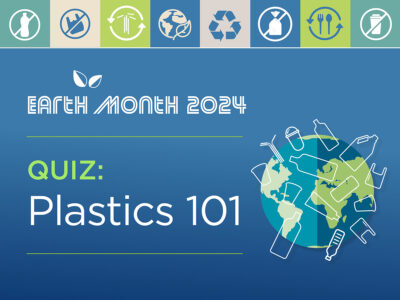This year, Climate Week NYC takes place from September 20 to 26. Hundreds of digital events from all around the world will be covering the climate crisis and pressing for a future that does not depend on fossil fuels. Check out what’s going on at Columbia Climate School, and take our quiz below to test your knowledge of the latest climate news from the Climate School, the State of the Planet blog, and beyond. Be sure to drop your score in the comments section below.
Through regenerative agriculture, farmers can manage their land in such a way that maximizes the natural ability of soil to capture and store carbon dioxide from the atmosphere. The Biden administration has set a goal of fully offsetting America’s carbon emissions by 2050. If the 1.2 billion acres of American farmland transitioned to regenerative agricultural practices, what percentage of the carbon required to meet this goal could be sequestered through farming?

Regenerative agricultural practices have required more labor compared to conventional farming, but technological developments give hope that this will change. Read about how researchers, farmers, and entrepreneurs are working together at the Scenic Hudson Soil Lab to mainstream widespread regenerative agriculture here.
Warmer air holds more water, leading to more extreme rainfall during weather events like hurricanes and storms. How many degrees Celsius warmer is the Earth’s atmosphere compared to pre-Industrial Revolution temperatures?

As the atmosphere gets warmer, scientists are taking note of more extreme weather events and the resulting damages. The recent Hurricane Ida surprised many with its unexpected destruction. Columbia Climate School experts in extreme weather, disaster resilience, and climate science weigh in with their insights here.
Water freezes in layers over time, so typically, the closer ice is to the surface of a glacier or ice sheet, the more recent it is. A vertical section, or ice core, can be “read” like a timeline. What type of information can researchers discover in these ice cores?

When water freezes, air bubbles, and anything in that air, freeze along with it. Scientists can analyze the chemical properties of gas particles in the ice cores to determine what the climate and atmosphere were like when that ice was formed. Researchers have innovated a new method to isolate microbial DNA found in ice cores. Read on here.
Blue whales are currently listed as an endangered species, making the ecosystems that support them critical to understand and monitor. Large populations of eastern South Pacific blue whales can be found off the northern coast of Chilean Patagonia, due to an abundance of their primary food source. What creature forms the basis of a blue whale’s diet?

Glacial runoff floods the coastal waters around Chilean Patagonia with nutrients, giving the area extraordinarily high production. While seals and dolphins also make their home here, it is krill, a small shrimp-like crustacean, that make up the bulk of a blue whale’s diet. Curious about how the fishing industry threatens blue whale populations? Read more here.
President Joe Biden recently announced the goal that by 2030, half of newly-manufactured American motor vehicles would be electric. What obstacle stands in the way of this goal?

Despite numerous obstacles, powerful strategies do exist to help America make the transition to electric vehicles. Government subsidies can bring the sticker price down to that of conventional vehicles. Privatization of charging stations could incentivize gas stations to transition to electric stations. And while robotic assembly will shift the job market away from manual, blue-collar jobs to technical ones, it will take time, (and blue-collar workers) to build new plants and infrastructure. Get Steve Cohen’s take here.
Many in the sporting industry are re-examining their “business as usual” practices to embrace sustainable alternatives. At the Tokyo Olympics, medals were made from recycled electronics, energy was 100% renewable, and unavoidable greenhouse gas emissions were offset. Tennis ball production, however, is an area that can definitely use some improvement; current production practices are environmentally detrimental. How many tennis balls are used during the two-week US Open?

The US Open goes through 70,000 tennis balls in two weeks. With numbers like that, sustainability improvements could contribute in a big way. Dig into some of the different ways those in the world of tennis are addressing sustainability and waste issues here.
Extreme heat has become America’s deadliest weather-related killer, and city dwellers are more at risk than those in less populous areas. What is the term commonly used to describe an inner-city zone where temperatures can be as much as 20 degrees F warmer than surrounding, vegetated areas?

Scientists have documented the urban heat island effect in cities since the 1800s. New research increasingly shows that, in cities across the U.S., racially and socioeconomically marginalized neighborhoods disproportionately bear the burdens of environmental degradation and the health problems associated with them. Read about Liv Yoon’s collaborative project to heat-map Manhattan and Bronx neighborhoods here.
Shutdowns around the world caused by the COVID-19 pandemic contributed to numerous environmental changes. Many regions reported their clearest skies in decades. Others have noted an increase in a new kind of litter – masks, gloves, and other personal protective equipment. Another change came from snowy High Mountain Asia. What happened?

During March to June in 2020, the concentration of polluting particles deposited on snow across the Himalayas was reduced by 30%. Discover what this means to the more than 300 million people who rely on these glacierized areas of the Indus River Basin for water here.
4,2,4,2,4,3,1,3
75



